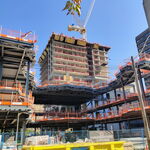Haljackey
Active Member
The answer to this, I would contend, is rigourous police enforcement.
Lots of places have better driving culture.
Some of it is training (amount, quality, that its mandatory); some of it is tougher licensing exams. But much of it, in many places, owes to a no-nonsense enforcement of the rules of the road.
Even when speeding was more rigoursly enforced, unsafe lane change was something we were lax about here. Police would issue the occasional ticket, usually associated with an accident, or sometimes
when the person was foolish enough to do this right in front of an officer, cutting them off; but for the most part, I never saw common enforcement.
There ought to be. It would certainly prove profitable for government.
That said, last I checked, driver training still isn't mandatory here; road tests are not as comprehensive as they ought to be; and I would argue strongly for tests on simulators so that a variety of situations can be tested (driving in rain, snow, at night) during every test. A real-world test can be the final exam, but you have to pass the simulator test first, and it will penalize for unsafe lane change, and every other infraction.
...But but but if we had better driver training we may not get shows like Canada's Worst Driver!





